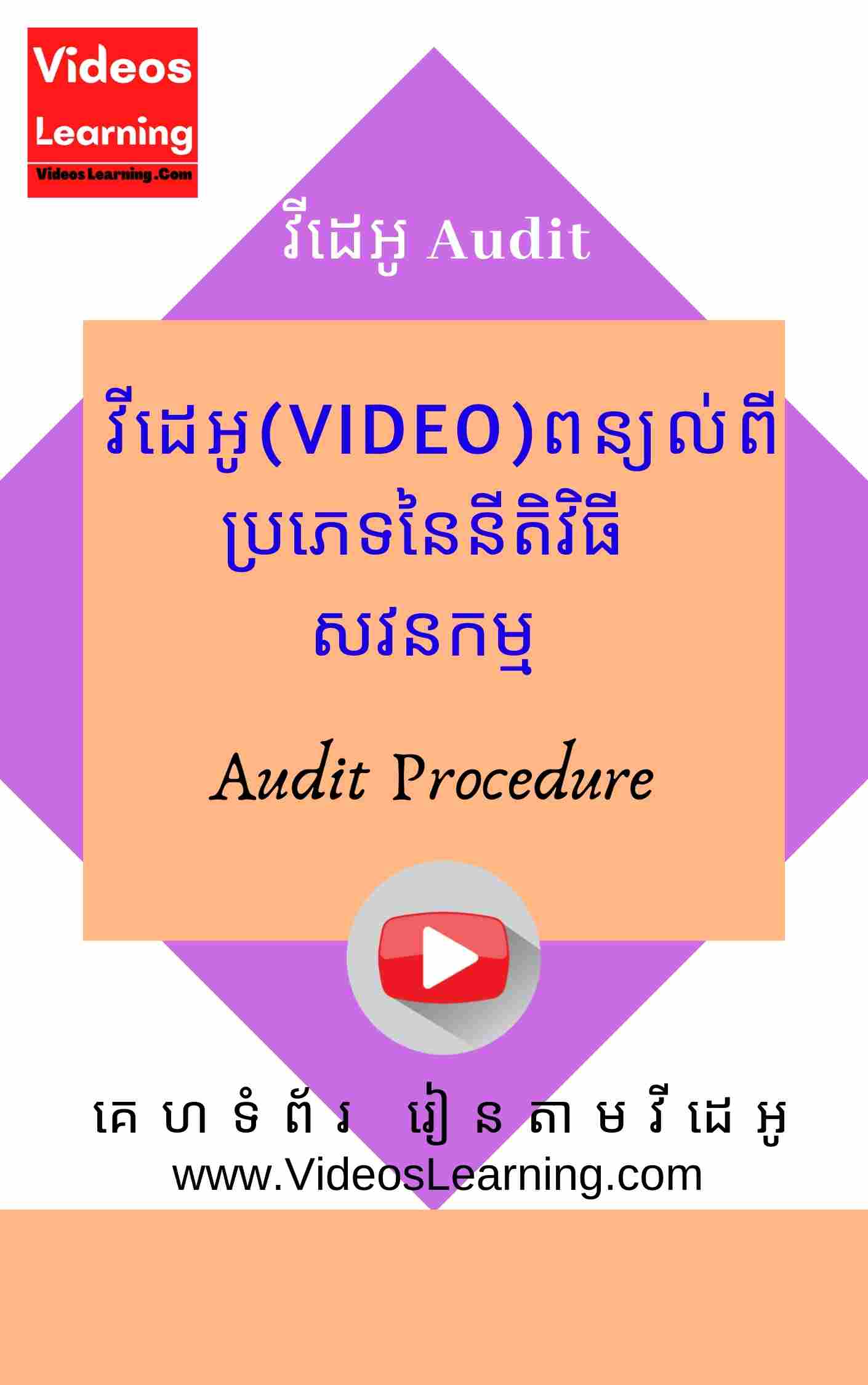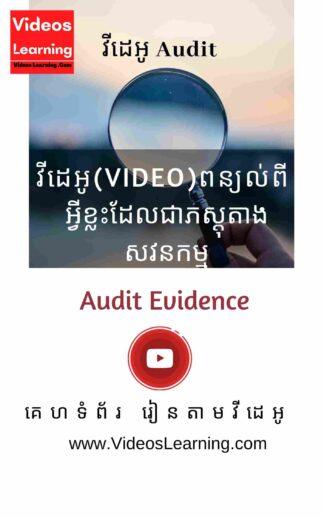វីដេអូរៀនពីប្រភេទនៃនីតិវិធីសវនកម្ម (Video about Audit Procedure)
$7
តើនីតិវិធីពិនិត្យឡើងវិញគឺជាអ្វី? វិធីសាស្រ្តសវនកម្មត្រូវបានប្រើប្រាស់ដោយអធិការដើម្បីសម្រេចគុណភាពនៃទិន្នន័យរូបិយវត្ថុដែលត្រូវបានផ្តល់ឱ្យដោយអតិថិជនរបស់ពួកគេ ដែលកើតឡើងនៅក្នុងការបញ្ចេញមតិនៃការសន្មត់របស់សវនករ។ វិធីសាស្រ្តច្បាស់លាស់ដែលបានប្រើប្រាស់នឹងផ្លាស់ប្តូរដោយអតិថិជន អាស្រ័យលើលក្ខណៈនៃពាណិជ្ជកម្ម និងសេចក្តីថ្លែងការណ៍ត្រួតពិនិត្យដែលអ្នកត្រួតពិនិត្យត្រូវបង្ហាញ។ នេះគឺជាការចាត់ថ្នាក់ទូទៅមួយចំនួននៃនីតិវិធីពិនិត្យ៖ ការធ្វើតេស្តចំណាត់ថ្នាក់។ យុទ្ធសាស្រ្តពិនិត្យឡើងវិញត្រូវបានប្រើដើម្បីជ្រើសរើសថាតើការផ្លាស់ប្តូរត្រូវបានចាត់ថ្នាក់យ៉ាងត្រឹមត្រូវនៅក្នុងកំណត់ត្រាគណនេយ្យ។ សម្រាប់ឧទាហរណ៍ ការទិញកំណត់ត្រាសម្រាប់ទ្រព្យសកម្មដែលបានទូទាត់អាចត្រូវបានពិនិត្យមើលដើម្បីមើលឱកាសបិទដែលពួកគេត្រូវបានចាត់ថ្នាក់យ៉ាងត្រឹមត្រូវនៅក្នុងគណនីធនធានដែលបានទូទាត់ត្រឹមត្រូវ។ ការធ្វើតេស្តភាពពេញលេញ។ វិធីសាស្រ្តត្រួតពិនិត្យអាចសាកល្បងដើម្បីមើលថាតើការផ្លាស់ប្តូរណាមួយត្រូវបានបាត់បង់ពីកំណត់ត្រាគណនេយ្យ។ សម្រាប់ឧទាហរណ៍ ការបញ្ជាក់អំពីធនាគាររបស់អតិថិជនអាចត្រូវបានពិនិត្យយ៉ាងល្អិតល្អន់ ដើម្បីមើលក្នុងករណីដែលការបង់រំលស់ដល់អ្នកផ្តល់សេវាមិនត្រូវបានកត់ត្រានៅក្នុងសៀវភៅ ឬក្នុងករណីដែលបង្កាន់ដៃសាច់ប្រាក់ពីអតិថិជនមិនត្រូវបានកត់ត្រា។ ជា
What are Review Procedures? Audit methods are utilized by inspectors to decide the quality of the monetary data being given by their clients, coming about within the expression of an auditor’s supposition. The precise methods utilized will change by client, depending on the nature of the trade and the review statements that the inspectors need to demonstrate. Here are a few common classifications of review procedures: Classification testing. Review strategies are used to choose whether exchanges were classified accurately within the bookkeeping records. For illustration, buy records for settled assets can be looked into to see on the off chance that they were accurately classified inside the correct settled resource account. Completeness testing. Review methods can test to see if any exchanges are lost from the bookkeeping records. For illustration, the client’s bank articulations may well be scrutinized to see in the event that any installments to providers were not recorded within the books, or in case cash receipts from clients were not recorded. As a



